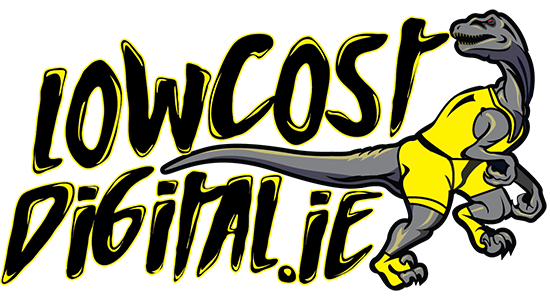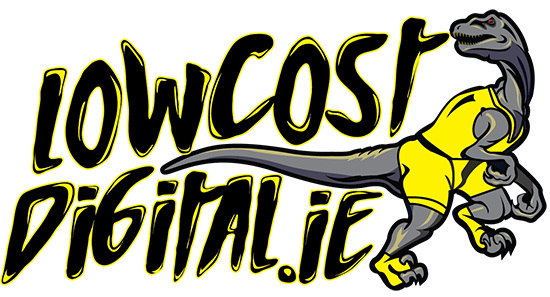In the ever-evolving world of digital design, staying ahead of the curve is crucial for creating engaging and user-friendly travel websites. From immersive visuals to seamless navigation, this ultimate guide explores the latest trends shaping travel web design. Discover how to captivate visitors and enhance their online experience with innovative techniques and cutting-edge aesthetics. Embark on a journey through the top trends influencing the future of travel web design.
Key Highlights
- Travel web design trends play a crucial role in attracting and engaging users on travel websites.
- Key components of modern travel websites include a visually appealing landing page, intuitive navigation, and compelling imagery.
- User experience is of utmost importance in travel web design as it affects the booking process, functionality, and layout of the website.
- Successful travel website designs focus on creating a seamless user experience and incorporating effective call-to-action elements.
- Accessibility and mobile responsiveness are essential factors in travel web design, ensuring that the website is accessible on different devices and caters to all users.
Introduction
In today’s digital age, travel websites have become an integral part of the travel planning process. With the increasing competition in the travel industry, it is crucial for travel websites to stand out and provide an exceptional user experience to attract and retain customers. This is where internet and travel web design trends, such as site design, come into play for a successful travel blog.
Travel web design trends refer to the latest techniques and approaches used in designing and developing travel websites. These trends focus on creating visually appealing websites, improving user experience, and optimizing for different devices. By incorporating these trends, travel websites can enhance their online presence, engage users, and ultimately drive more bookings.
In this ultimate guide, we will explore the key highlights, defining aspects, and importance of travel web design trends. We will also analyze successful travel website designs, including a case study of a travel agency website. Additionally, we will delve into the role of accessibility and mobile responsiveness in travel web design. Furthermore, we will discuss the impact of multimedia content and SEO strategies on travel websites. Lastly, we will explore the integration of social media and user-generated content in travel web design.
By understanding and implementing these travel web design trends, travel businesses can create visually stunning websites that provide an exceptional user experience, attract more visitors, and increase bookings.
Defining Today’s Travel Web Design Trends
In the ever-evolving world of website design, travel web design trends have emerged as a key focus for travel businesses. These trends encompass various aspects of website design, including layout, functionality, and user experience. By keeping up with the latest travel web design trends, travel websites can stay ahead of the competition and provide a seamless and engaging user experience. www.lowcostdigital.ie
Key Components of Modern Travel Websites
Modern travel websites consist of several key components that contribute to their overall design and functionality. These components include:
- Visually appealing landing page: The landing page is the first impression visitors get of a travel website. It should be visually appealing, showcasing stunning imagery related to travel destinations and experiences.
- Intuitive navigation: The navigation of a travel website should be user-friendly and intuitive, allowing visitors to easily find the information they are looking for. Clear and concise menu options and search functionality are essential.
- Compelling imagery: High-quality imagery plays a crucial role in attracting and engaging visitors on travel websites. Eye-catching visuals of destinations and experiences help create an emotional connection with potential travelers.
- Engaging call-to-action elements: Effective call-to-action elements, such as booking buttons and newsletter sign-ups, guide visitors towards the desired actions and encourage conversions.
By incorporating these key components into their travel website designs, businesses can create a visually appealing and user-friendly online presence that captures the attention of potential travelers.
Importance of User Experience in Travel Web Design
User experience is a critical aspect of travel web design. A well-designed and intuitive user experience can make all the difference in attracting and converting visitors into customers.
One of the key areas where user experience is crucial is the booking process. A streamlined and user-friendly booking process can significantly impact the conversion rate of a travel website. By simplifying the steps involved in booking and providing clear instructions, travel websites can enhance the user experience and encourage more bookings.
Functionality is another important consideration in travel web design. It is essential to ensure that all features and functions of the website, such as search filters, booking forms, and payment gateways, work seamlessly and are easy to use. A well-designed layout that follows best practices for user experience (UX) and visual hierarchy can also enhance the overall user experience and make it easier for visitors to find the information they need, especially when using a luxury booking engine like Hoshinoya – Turneffe Island Resort in popular national parks.
By prioritizing user experience in travel web design, businesses can create websites that are not only visually appealing but also user-friendly and optimized for conversions. www.lowcostdigital.ie
Analyzing Successful Travel Website Designs
Analyzing successful travel website designs can provide valuable insights and inspiration for businesses looking to improve their own websites. By studying websites that have achieved success in terms of user engagement and conversions, businesses can identify design elements and strategies that work well in the travel industry. www.lowcostdigital.ie
Case Study: How www.lowcostdigital.ie Masters Travel Web Design
One great example of a successful travel website design is www.lowcostdigital.ie. This travel agency website has mastered the art of creating an engaging and user-friendly web design that drives conversions.
|
Key Factors |
Description |
|
Visually appealing design |
The website features stunning imagery and a clean layout that immediately captures the attention of visitors |
|
Streamlined booking process |
The booking process is simple and intuitive, with clear instructions and easy-to-use forms |
|
Clear call-to-action buttons |
Throughout the website, there are strategically placed call-to-action buttons that prompt visitors to take the desired actions, such as booking a trip |
|
Mobile responsiveness |
The website is designed to be fully responsive, ensuring a seamless experience for users on all devices |
By implementing these design elements and strategies, www.lowcostdigital.ie has achieved a high conversion rate and provided an exceptional user experience for its visitors. www.lowcostdigital.ie
Inspirational Examples of Leading Travel Websites
In the world of travel web design, there are several inspirational examples of leading travel websites that have set the bar high for design and functionality. These websites stand out for their innovative designs, informative content, and user-friendly interfaces.
One example is the website of a luxury travel agency that showcases luxurious destinations and experiences in a visually stunning way. Another example is an informative website that provides comprehensive travel information, including destination guides and travel tips. Additionally, there are clean websites that offer a minimalist design with a focus on impactful imagery and easy navigation, making it crucial to pay attention to page design, specifically web page design, when creating a successful travel website with subcategories for easy navigation.
These inspiring travel websites serve as great examples for businesses looking to create a visually appealing and user-friendly online presence. By studying these websites and incorporating similar design elements into their own website, businesses can create a standout travel website that attracts and engages visitors.
Accessibility and Mobile Responsiveness
In today’s digital landscape, it is essential for travel websites to be accessible on all devices, including mobile phones and tablets. Mobile responsiveness refers to the ability of a website to adapt and display properly on different screen sizes.
Accessibility is another crucial aspect of travel web design. An accessible website ensures that all users, including those with disabilities, can navigate and interact with the website effectively. This includes incorporating features such as alternative text for images, keyboard navigation, and adjustable font sizes.
By prioritizing mobile responsiveness and accessibility in travel web design, businesses can reach a wider audience and provide an inclusive user experience for all visitors.
Optimizing for Different Devices
Optimizing a travel website for different devices is essential in today’s mobile-driven world. With the increasing use of smartphones and tablets for travel planning, it is crucial for travel websites to provide a seamless experience across all devices.
A responsive layout is a key component of optimizing for different devices. This means that the website automatically adjusts its layout and content based on the screen size of the device. This ensures that the website looks and functions optimally, whether accessed from a mobile phone, tablet, or desktop computer.
By implementing a responsive layout and optimizing for different devices, travel websites can provide a consistent and user-friendly experience for all visitors, regardless of the device they are using. www.lowcostdigital.ie
Ensuring All Travelers Are Welcomed: Accessibility Features
Inclusive design and accessibility are crucial considerations in travel web design. It is essential to ensure that all travelers, regardless of their abilities, can access and navigate the website effectively.
Incorporating accessibility features into travel websites can include providing alternative text for images, using clear and easy-to-read fonts, and implementing keyboard navigation options. These features make the website more accessible for individuals with visual impairments, motor disabilities, or other accessibility needs.
Assistive technologies, such as screen readers and voice commands, can also enhance the user experience for individuals with disabilities. By considering these accessibility features and designing a user interface that is inclusive and accessible, travel websites can provide a welcoming and user-friendly experience for all travelers.
Leveraging Multimedia Content for Engagement
Engaging visitors on a travel website is crucial for driving conversions and bookings. One effective way to achieve this is by leveraging multimedia content.
Multimedia content, such as high-quality images and videos, can create a captivating visual experience for visitors. These visual elements can showcase destinations, experiences, and accommodations, allowing potential travelers to imagine themselves in those locations.
By incorporating compelling multimedia content, travel websites can engage visitors, evoke emotions, and create a strong desire to explore and book their next travel adventure. www.lowcostdigital.ie
The Role of High-Quality Images and Videos
High-quality images and videos play a crucial role in capturing the attention of visitors and creating a visually appealing travel website.
Images and videos provide a glimpse into the destinations and experiences that travelers can expect. By showcasing stunning visuals, travel websites can instantly captivate visitors and create a desire to explore further.
Graphics and visual elements, such as infographics and interactive maps, can also enhance the user experience and provide valuable information in a visually appealing way. By incorporating these elements, travel websites can effectively communicate key details and engage visitors.
Incorporating high-quality images, videos, and visual elements can elevate the overall design and user experience of a travel website, making it more enticing and memorable for potential travelers. www.lowcostdigital.ie
Virtual Tours: A Game-Changer in Travel Web Design
Virtual tours have emerged as a game-changer in travel web design. These interactive experiences allow visitors to virtually explore destinations, accommodations, and attractions.
By incorporating virtual tours on a travel website, businesses can provide an immersive experience for potential travelers. These tours often include 360-degree views, allowing visitors to navigate and explore the location as if they were physically there.
Virtual tours not only engage visitors but also provide them with a realistic and interactive preview of the destination or accommodation. This can greatly influence their decision-making process and increase the likelihood of bookings.
By leveraging virtual tours, travel websites can stand out from the competition and provide a unique and memorable user experience for their visitors.
SEO Strategies for Travel Websites
Implementing effective SEO strategies is crucial for the success of a travel website. SEO, or search engine optimization, involves optimizing a website to rank higher in search engine results pages.
By optimizing a travel website for relevant keywords and improving its overall search engine visibility, businesses can increase organic traffic and attract more potential travelers.
SEO strategies for travel websites include keyword optimization, local SEO targeting specific destinations, and creating relevant and informative content. By incorporating these strategies, travel websites can improve their online visibility and increase their chances of being discovered by potential travelers. www.lowcostdigital.ie
Keyword Optimization for the Travel Industry
Keyword optimization is a crucial aspect of SEO for travel websites. By optimizing website content with relevant keywords, businesses can improve their search engine rankings and attract more organic traffic.
Keyword research is the first step in optimizing a travel website for search engines. By identifying the most relevant and high-volume keywords related to the travel industry, businesses can create content that aligns with the search terms potential travelers are using.
Incorporating these keywords into website content, including page titles, headings, and meta descriptions, can help improve search engine visibility and increase the chances of attracting potential travelers.
By implementing a comprehensive keyword optimization strategy, travel websites can improve their SEO performance and increase their chances of ranking higher in search engine results pages.
Local SEO: Attracting Visitors to Specific Destinations
Local SEO is a crucial strategy for travel websites that aim to attract visitors to specific destinations. By leveraging local SEO techniques, businesses can increase their visibility in local search results and target potential travelers who are interested in visiting specific locations.
Local SEO involves optimizing website content with location-specific keywords, creating location-specific landing pages, and optimizing Google My Business profiles. This helps businesses appear in local search results when potential travelers are searching for destination-specific information.
By implementing effective local SEO strategies, travel websites can increase their chances of attracting travelers who are specifically interested in visiting their target destinations.
Social Media Integration and User-Generated Content
Social media integration and user-generated content play a significant role in travel web design. These elements can enhance user engagement and provide social proof, leading to increased trust and bookings.
By integrating social media platforms into a travel website, such as displaying social media feeds or providing social sharing buttons, businesses can encourage visitors to engage with their content and share it with their own social networks.
User-generated content, such as reviews and testimonials from past travelers, can also be incorporated into a travel website. This provides valuable social proof and builds trust with potential travelers, increasing the likelihood of bookings.
By leveraging social media integration and user-generated content, travel websites can enhance user engagement and attract more potential travelers. www.lowcostdigital.ie
Encouraging Social Shares and Interactions
Encouraging social shares and interactions is a key strategy in travel web design. By making it easy for visitors to engage with and share content from a travel website, businesses can increase their online visibility and reach a wider audience.
Integrating social media sharing buttons on website content allows visitors to easily share interesting articles, destination guides, or travel deals with their own social networks. This can lead to increased brand exposure and potentially attract new visitors to the website.
Additionally, providing opportunities for visitors to interact with the website, such as leaving comments or participating in surveys or quizzes, can enhance user engagement and provide valuable feedback for businesses.
By creating a social-friendly and interactive travel website, businesses can foster engagement and increase their online presence.
Showcasing Reviews and Testimonials
Showcasing reviews and testimonials is a powerful strategy in travel web design. By featuring positive reviews and testimonials from past travelers, businesses can build trust and credibility with potential customers.
Reviews and testimonials serve as trust signals, providing social proof that the travel website and its services are reliable and trustworthy. By highlighting the positive experiences of previous customers, businesses can alleviate any doubts or concerns potential travelers may have and encourage them to book their trips.
Including reviews and testimonials prominently on a travel website, such as on the homepage or dedicated testimonial pages, can significantly impact the decision-making process of potential travelers and increase the likelihood of bookings. www.lowcostdigital.ie
Conclusion
Travel web design trends play a crucial role in attracting and engaging visitors. By focusing on user experience, accessibility, multimedia content, SEO strategies, and social media integration, you can create a captivating travel website that stands out in the crowded online space. Learn from successful examples like www.lowcostdigital.ie and incorporate inspirational elements into your own design. Remember, optimizing for different devices, leveraging high-quality multimedia, and integrating user-generated content are key to enhancing user engagement and boosting your website’s visibility. Keep evolving with the latest trends to provide a seamless and immersive experience for travelers exploring your site. www.lowcostdigital.ie
Frequently Asked Questions
How to Incorporate Travel Web Design Trends into Your Website?
To incorporate travel web design trends into your website, consider using a website builder that offers templates and design elements specifically tailored for the travel industry. Focus on creating a visually appealing landing page, intuitive navigation, and engaging multimedia content. Ensure a seamless user experience and optimize for different devices. Stay up-to-date with the latest trends and continuously evaluate and improve your website’s design elements and user experience.
What Makes a Travel Website Design Effective?
An effective travel website design prioritizes user experience, with intuitive navigation, clear visual hierarchy, and prominent calls to action. It should provide a seamless and engaging user experience, leading to increased conversions and bookings. Regularly analyze and optimize your website’s design elements and user experience to ensure its effectiveness.












